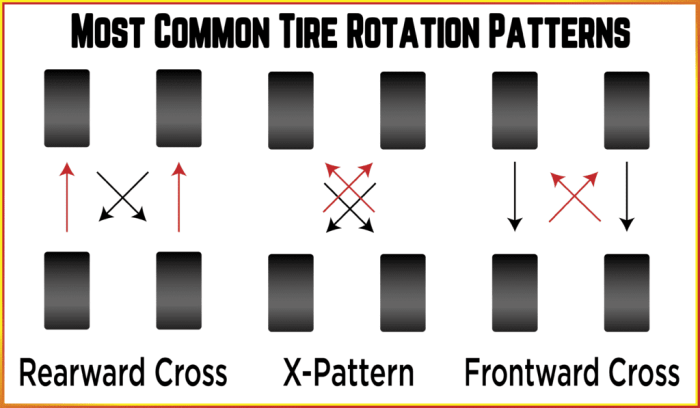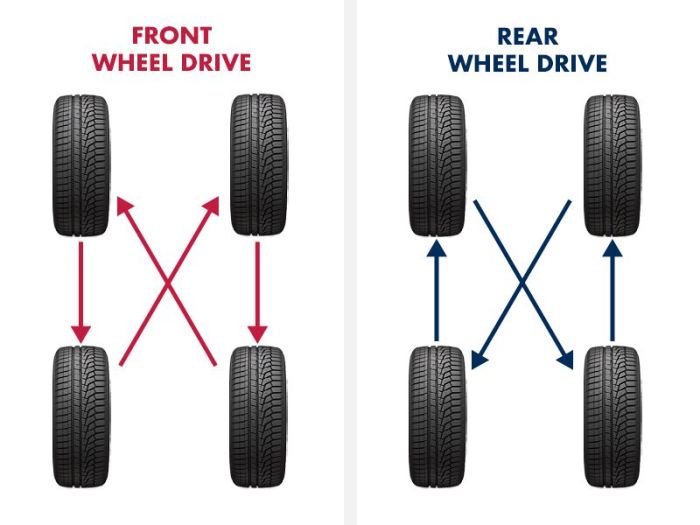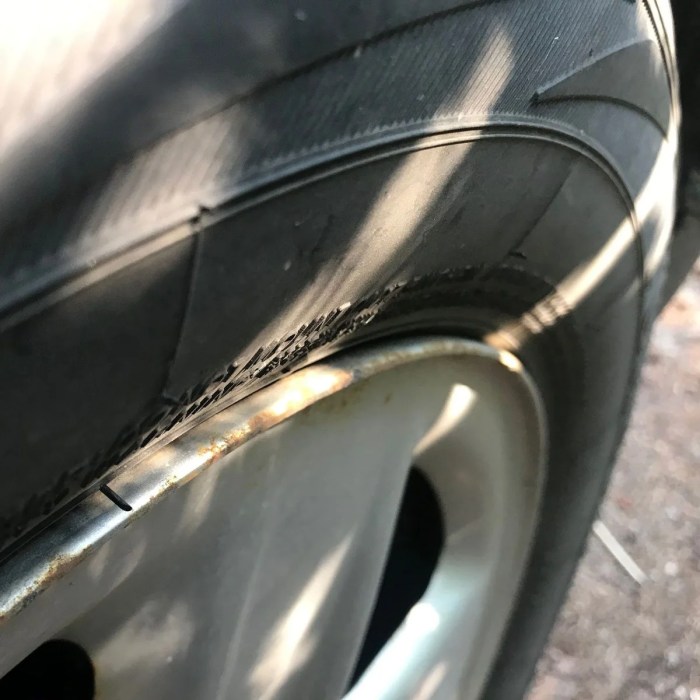How to properly rotate your car tires takes center stage, beckoning readers into a world of good knowledge. Discover the benefits of tire rotation and learn how to maintain optimal tread wear for your vehicle.
From understanding the importance of tire rotation to mastering the DIY steps, this guide covers all you need to know to keep your car running smoothly.
Understanding Tire Rotation
Regular tire rotation is an essential aspect of car maintenance that should not be overlooked. By rotating your tires at the recommended intervals, you can ensure even wear and extend the lifespan of your tires.
There are several benefits to tire rotation, including improved vehicle performance, better fuel efficiency, and a smoother ride. It also helps maintain proper traction and handling, especially in adverse weather conditions.
When it comes to maintaining your car’s health on the road, having the right tools is essential. Explore the latest technology with the top car diagnostic tools that can help you troubleshoot any issues that may arise during your journey.
Benefits of Tire Rotation
- Even Tread Wear: Rotating your tires helps distribute the wear more evenly across all four tires, preventing premature wear on one or two tires.
- Extended Tire Lifespan: With even wear, your tires will last longer, saving you money in the long run by delaying the need for replacement.
- Improved Performance: Properly rotated tires can enhance your car’s performance, including better handling and braking capabilities.
- Enhanced Safety: Maintaining even tread wear through tire rotation can improve traction and reduce the risk of accidents, especially on wet or slippery roads.
When to Rotate Tires

Proper tire rotation is essential to ensure even wear and prolong the lifespan of your tires. Knowing when to rotate your tires can help you maintain optimal performance and safety on the road.
Factors like driving habits and terrain can impact how often you should rotate your tires. For most vehicles, it is recommended to rotate your tires every 5,000 to 8,000 miles. However, if you frequently drive on rough roads or carry heavy loads, you may need to rotate your tires more often.
Recommended Frequency for Tire Rotation
- Every 5,000 to 8,000 miles: Regular vehicles under normal driving conditions
- Every 3,000 to 5,000 miles: Vehicles with heavy loads or frequent off-road driving
Signs that Indicate It’s Time to Rotate Tires
- Uneven tire wear: If you notice one or more tires wearing out faster than the others, it’s time to rotate them to ensure even wear.
- Vibration or pulling: If you feel vibrations in the steering wheel or your vehicle pulls to one side, it could indicate that your tires need rotation.
- Noise: Excessive road noise coming from your tires can be a sign of uneven wear, prompting the need for rotation.
DIY Tire Rotation Steps

To properly rotate your car tires at home, you will need to follow a few simple steps. This routine maintenance task can help extend the life of your tires and ensure even wear for better performance on the road.
Tools Needed for Tire Rotation
- Jack
- Jack stands
- Lug wrench
- Torque wrench
- Wheel chocks
Make sure you have all the necessary tools before starting the tire rotation process.
Proper Jacking Points for Lifting
Before jacking up your vehicle for tire rotation, it’s crucial to locate and utilize the proper jacking points to ensure safety and prevent damage to the vehicle.
| Vehicle Type | Jacking Points |
|---|---|
| Cars | Refer to the owner’s manual for specific jacking points, usually located near the front and rear tires. |
| Trucks/SUVs | Common jacking points are often the frame or designated areas along the sides of the vehicle. |
Tire Rotation Patterns

When it comes to tire rotation, there are several patterns that can be used to ensure even wear and prolong the life of your tires. Let’s explore the different tire rotation patterns and their benefits based on vehicle type and tire wear patterns.
If you’re planning a summer road trip, you’ll definitely want to check out the top convertible cars for summer road trips. These vehicles offer the perfect combination of style and comfort for cruising down scenic highways with the top down.
Front to Back Rotation
One of the most common tire rotation patterns is front to back. This involves moving the front tires to the rear and vice versa. This pattern is ideal for front-wheel-drive vehicles as it helps balance out the wear on the front tires, which tend to wear out faster due to the weight of the engine.
Side to Side Rotation
Side to side rotation involves moving the tires from one side of the vehicle to the other. This pattern is beneficial for vehicles with different tire sizes on the front and rear axles. It helps ensure that all tires wear evenly and maintain a consistent grip on the road.
Crisscross Rotation
Crisscross rotation is a more complex pattern where the front tires are moved to the opposite sides of the rear axle and vice versa. This pattern is beneficial for all-wheel-drive vehicles or vehicles with a staggered tire setup. It helps promote even wear on all tires and ensures optimal performance.
Importance of Balancing and Alignment: How To Properly Rotate Your Car Tires
When rotating your tires, it is crucial to also consider balancing and alignment to ensure optimal performance and longevity of your tires. Balancing and alignment play a significant role in maintaining even tread wear and improving overall driving experience.
Balancing Tires, How to properly rotate your car tires
After rotating your tires, it is important to have them balanced to ensure that weight is evenly distributed around the tire and wheel assembly. Unbalanced tires can lead to uneven wear, vibrations, and potential damage to suspension components.
- Regularly check for signs of unbalanced tires such as vibrations felt through the steering wheel or uneven tread wear.
- If you suspect your tires are unbalanced, visit a professional mechanic who can use specialized equipment to rebalance the tires.
- DIY tip: You can use a tire balancing kit at home to check and rebalance your tires if you have the necessary tools and skills.
Wheel Alignment
Proper wheel alignment is essential for maintaining the longevity of your tires after rotation. Incorrect alignment can cause uneven wear on the tires, affecting handling, fuel efficiency, and overall safety on the road.
- Check wheel alignment regularly, especially after rotating your tires, to ensure they are properly aligned.
- Look for signs of misalignment such as uneven tread wear, pulling to one side, or a crooked steering wheel when driving straight.
- Visit a professional alignment shop to have your alignment checked and adjusted if needed.
- DIY tip: You can perform a basic alignment check at home using a string alignment method, but for precise adjustments, it is recommended to seek professional help.
Closure
Mastering the art of tire rotation not only enhances your vehicle’s performance but also ensures longevity. By following these guidelines, you can achieve a smoother ride and avoid unnecessary wear and tear on your tires.